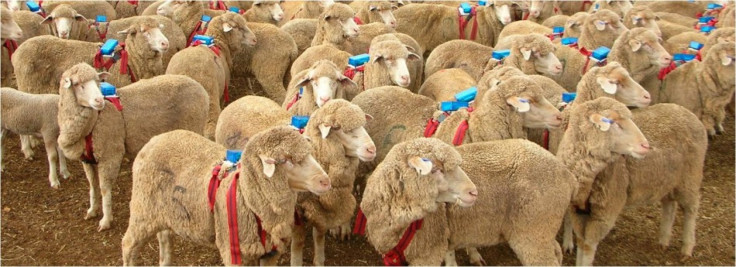Sheep Flock Together In 'Selfish Herd,' Scientists Say

Sheep band together not out of a sense of community, but because it helps lower their odds of being eaten by predators, a new study claims.
The herding instinct has long been thought to be a natural way for animals to protect themselves against predators. But scientists have differed in their explanations for why flocking behavior evolved. The 'many eyes' theory posits that larger groups are better at detecting predators. Then there's the 'selfish herd' theory, which suggests that flocking evolved so that individuals could play the odds - in a group, a predator is as likely to attack your neighbor as yourself, whereas if you're on your own, you're the primary target.
In a newly published study in the journal Current Biology, a group of researchers led by University of London scientists outfitted a herd of sheep with backpacks. They weren't sending the sheep off to school, though; the backpacks contained GPS devices to examine the dynamics of herd movement.
Using the GPS devices, the researchers looked at how a herd of 46 sheep moved as they were herded by a trained dog. The scientists found that individual sheep try to move towards the center of the herd, away from the edges where danger resides. Meanwhile, the entire flock moves away from the dog.
The flock is kind of continuously folding in on itself, lead author Andrew J. King said in a statement Monday.
King and his colleagues say their data shows that the sheep aren't moving randomly towards the center of the flock, but are deliberately considering where their neighbors are at as they try to navigate away from danger.
The researchers also speculated that their approach could also be used to understand how injured or sick individuals affect herd dynamics.
A sheepdog (in this case, an Australian Kelpie), of course, is different from a wolf or a coyote. The sheep might behave differently when faced with different threats, or in differently-sized herds.
However, it is clear that the ability for researchers to track individual movements relative to one another will be important in evaluating potential mechanisms underlying the selfi sh herd behaviour we have described, the authors wrote.
SOURCE: King et al. Selfish-herd behavior of sheep under threat. Current Biology 22: R561-562, 24 July 2012.
© Copyright IBTimes 2024. All rights reserved.











